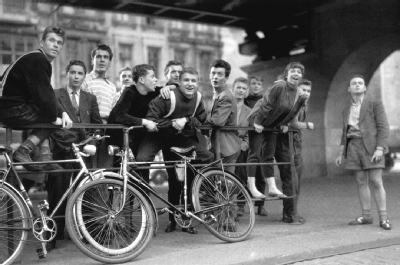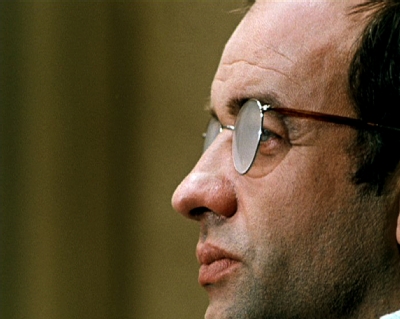Film Festival Exposes Rebellion Behind Iron Curtain
An East German Film Festival at The University of Scranton will give local audiences a rare glimpse into life in the German Democratic Republic before the fall of the Berlin Wall. This year’s festival features three films from a series titled “Rebels with a Cause,” which was screened in 2005 at the Museum of Modern Art (MOMA) in New York City.
In its fifth year, the festival, which is free of charge and open to the public, will be held in the Pearn Auditorium of Brennan Hall on Nov. 1, 2 and 3 at 7 p.m. All films will be shown with English subtitles.
As the series title suggests, these films were significant in combining political engagement with artistic innovation, and as the MOMA remarked, were rich in theme and style reflecting the energy of inventive filmmakers who dared to test the limits of censorship.
DEFA (1946-92), a state-owned studio, produced over 750 films (many of them at the famous Studio Babelsberg), and in recent international critics’ surveys, more than a dozen have been voted among the 100 best German films ever. Still, these and other original documentaries or fictional works from the German Democratic Republic (GDR) are largely unknown to audiences both in and outside of Germany.
The titles selected for The University’s 2011 German Film Festival represent three consecutive decades. “Berlin – Schönhauser Corner” (1957), a teen epic touted as East Germany’s “Rebel Without a Cause,” will be shown on Tuesday, Nov. 1. The comedy “Carbide and Sorrel” (1963) will be presented on Wednesday, Nov. 2, and “Her Third” (1971), a romance drama, will be screened on Thursday, Nov. 3. A summary of each film follows.
The 2011 East German Film Festival is sponsored by the Department of World Languages and Cultures at The University of Scranton. For additional information, call 941-7430.
Film Summaries:

Nov. 1: “Berlin-Schönhauser Corner” – (“Berlin – Ecke Schönhauser”). Dir. Gerhard Klein, 1957, 82 minutes, b/w. This classic 1950s teen cult film is a perceptive social portrayal of a city in which political and economic division have affected the entire population. Although the film became a box-office hit, it was greeted with suspicion by GDR cultural officials. Despite the negative reception from GDR officials, this film was loved by the public precisely for its truthful portrayal of everyday life. Ranked by film critics among Germany’s 100 most important films, this and other “Berlin films” by director Klein and screenwriter Kohlhaase made an important contribution to the youth film genre. (photo above)
Nov. 2: “Carbide and Sorrel” (“Karbid und Sauerampfer”). Dir. Frank Beyer, 1963, 80 minutes, b/w. At the end of World War II, workers in Dresden send their colleague Kalle hundred of miles north to pick up welding supplies for their factory. Kalle’s attempts to move supplies through the Soviet occupation zone become a hilarious odyssey full of high jinks and misadventures. Director Frank Beyer first took his film to Moscow, since GDR officials often questioned humor that flouted political authority. The hearty laughter of the Soviet functionaries there gave the green light for a German premiere. (no photo available)

Nov. 3: “Her Third” – (“Der Dritte”). Dir. Egon Günther, 1971, 111 minutes, color. After two failed relationships, each of which produced a child, a newly liberated protagonist discovers herself. Her amorous pursuit of a colleague provides not only an entertaining love story, but also a testament to the evolving self-confidence and independence of East German women. (photo above)






